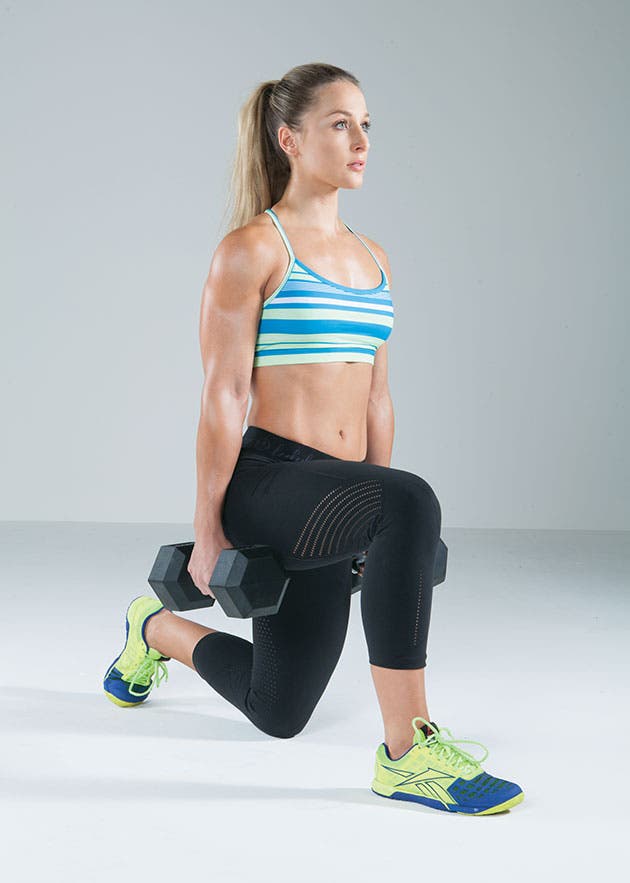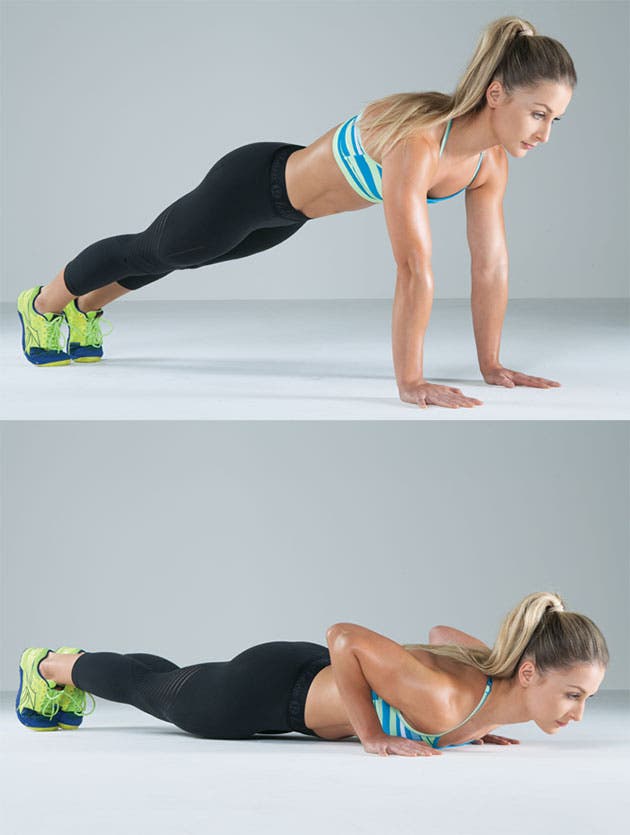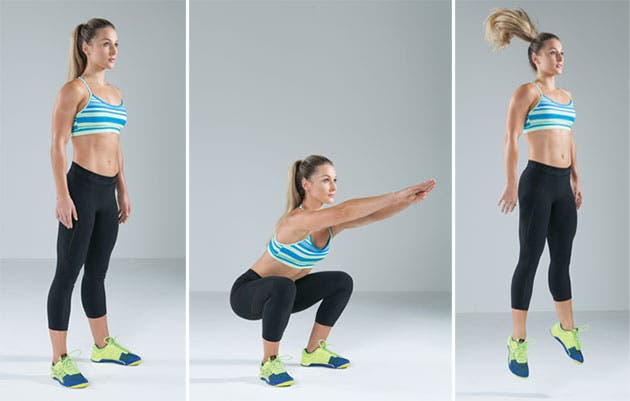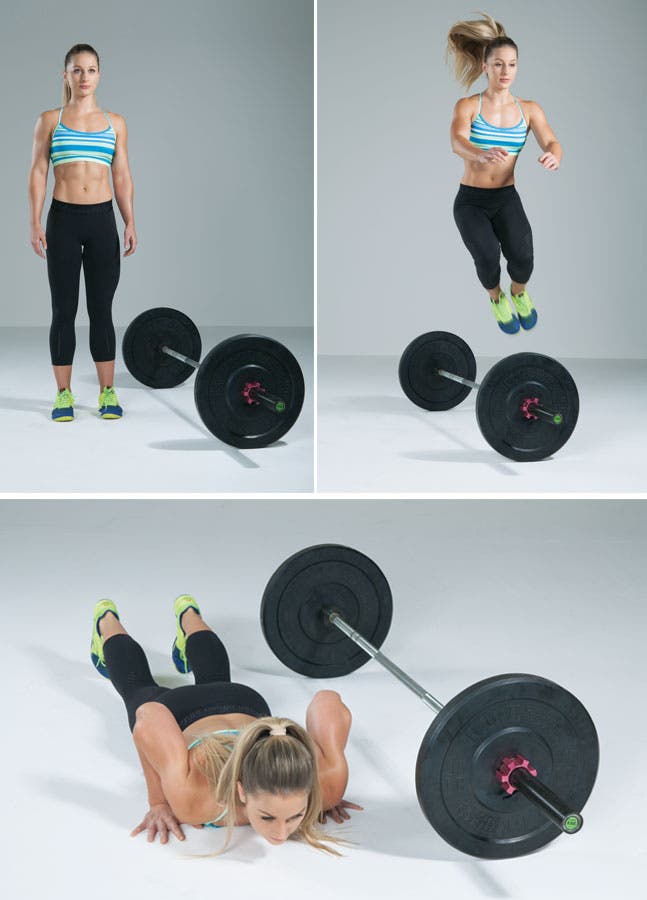Get Even Stronger

Three sets of 10. Four sets of 12. Repeat that 20 times and call it a day. Weight training has been structured this way for decades. Written down on a sheet or committed to memory or saved to your mobile device, these numbers are dutifully completed with all the intensity and enthusiasm of a CPA filing a tax return. But will following such a formula lead to a true boost to your fitness? More important, are those staid equations powerful enough to change your body? Certain training techniques — AMRAP and EMOM (we’ll get to the definitions shortly) — popularized recently by CrossFit, have flipped the script on the age-old “sets and reps” mind frame and adapt exceptionally well to more traditional workouts in commercial gyms. Each technique turns the level of intensity way up and squeezes out an astonishing amount of volume in a short window of time.
“You have to find new ways to confront your body with a stimulus to which it is not adapted,” adds Allison Moyer-Fahrenbach, CSCS, a CrossFit athlete and NPC figure competitor who owns Alli’s Fitness System in Lancaster, Pennsylvania. “Incorporating an AMRAP or EMOM throws in that new stimulus without having to switch up your entire training plan.”
EMOM: Every Minute On the Minute
This workout approach demands that a specific set of exercises be performed at the beginning of each minute for a predetermined number of minutes. Once that clock starts, you go down the rabbit hole and the adventure begins. Whatever time is left in the minute after completing the set is your rest period.
Katie Hogan, a head trainer for CrossFit HQ Seminar Staff and owner of ITF-Fitness.com, recommends that you add a bodypart-specific EMOM once a week as a finisher to your regular split routine. EMOMs are not usually very long, and Hogan warns that more — increasing the length of an EMOM workout — is not always better: You’ll generate less power output, making a longer workout less effective, according to Hogan. “Your sprints are going to slow down as you progress, and what was once a 20-second burst will become 40 seconds of moderate effort,” she says.
To create an EMOM workout, choose one to three exercises to do per minute that work different muscle groups. For instance, match a grip-intensive exercise like a row with a lower-body-intensive squat. Set the number of reps so that the first round takes you 20 to 25 seconds. If it takes longer than that, the later minutes are going to be too difficult.
Sample 14-minute EMOM Workout
- odd minutes: 15-20 alternating dumbbell lunges
- even minutes: 5 push-ups, 5 sit-ups, 5 jump squats
Alternating Dumbbell Lunge (odd minutes)

- Hold a pair of dumbbells at your sides.
- Take a long step forward with your right leg and bend both knees, descending until your back knee lightly taps the floor. Keep your front foot firmly planted, and do not allow your front knee to go past your toes.
- Push through your front heel and return to standing.
- Continue, alternating sides.
Push-up (even minutes)

- Assume a conventional push-up position with your hands shoulder-width apart, feet together and your head, hips and heels in line.
- Keeping your body in a straight line, bend at the elbows to lower your chest to a position so it just grazes the floor.
- Next, extend your arms to return to the start.
Option: You can perform these push-ups from your knees or transition to your knees as the minutes progress.
Sit-up (even minutes)

- Lie on your back with the soles of your feet touching and your knees splayed in a butterfly position.
- Keeping your abs tight, exhale and sit up until you can touch your feet with outreached fingers.
- Maintaining contraction in your abs, roll back until your shoulder blades and head make full contact with the ground.
- Touch the floor behind your head with your fingertips before going into the next rep.
Do it better: Try not to throw your arms forward to generate momentum and lift you off the floor.
Jump Squat (even minutes)

- Start in an upright athletic position with your feet shoulder-width apart, toes slightly pointed out.
- Push your hips rearward and squat down until your hip crease drops below your knees.
- Explode from this bottom position into a vertical jump.
- Land softly on the balls of your feet and then immediately descend into another squat in a smooth, controlled motion.
AMRAP: As Many Rounds (or Reps) as Possible
In an AMRAP, there is no predetermined rest period like in an EMOM. Instead, it is up to you to find that level of maximal exertion that you can maintain for the duration. AMRAPs can be painful, but they are also incredibly enlightening.
“An AMRAP removes that set numerical barrier so it tests your mental strength,” Moyer-Fahrenbach says. “How hard are you willing to push yourself? When someone says, ‘Eight minutes, here are the exercises. Go!’ it takes you out of your comfort zone.”
An AMRAP is like circuit training on Red Bull: The idea is to rest as little as possible and score as many reps as you can. (Yes, you need to count your reps.) This type of “chased-by-a-bear-through-the-woods” intensity is what drives physical change.
Do not worry about completing full rounds in an AMRAP. Even if you only have 30 seconds remaining, start a new round and score the number of reps you completed. That way, you can judge your level of improvement and power output the next time you do the same workout.
Because the point of an AMRAP is to maintain an elevated heart rate, keep your transitions between exercises short. Find a small footprint of space where you can set up for all your exercises and get to it.
Sample 20-minute AMRAP Workout
- 10 deadlifts
- 10 lateral burpees over a barbell
- 60-second plank hold
Deadlift

- Stand with your shins close to a loaded barbell on the floor, then hinge at the hips and grip the bar outside your legs. Keep your chest up and your head neutral, focusing on a spot on the floor about 5 feet in front of you.
- Drop your hips. Pull the bar up in a straight line, keeping it close to your body as your hips and shoulders rise at the same pace, until you’re in a locked-out standing position at the top.
- Lower slowly the way you came, touch the barbell lightly to the floor, then immediately go into the next rep.
Lateral Burpee Over a Barbell

- Stand parallel to the barbell you just used for deadlifts.
- Crouch and place your hands on the floor in front of you, then jump your feet back into a plank, shoulders over your wrists.
- Jump your feet back toward your hands, and as you begin to rise to standing, jump laterally over the barbell, bringing your knees high as you jump.
- Land softly and repeat, jumping back across the bar every rep.
Plank
- Get into a plank with your elbows under your shoulders and your head, hips and heels in line. Keep your hands apart, palms flat on the floor, and don’t allow your hips to arch or sag.
- Hold this position for the prescribed time.
Option: You can always keep your eyes focused down on the floor.
Tougher Workout Yet
If you think AMRAPs and EMOMs are fiendishly clever, you will find the format known as “Death by …” to be pure evil.
The idea is simple: Start a workout timer and perform one rep of a single exercise and then rest for the remainder of the minute. At the start of minute two, perform two reps. At the start of minute three, perform three reps. Continue in that fashion, adding one rep each minute until you fail to complete the required number of reps within 60 seconds.
Sample “Death By…” Workout
Workout courtesy of David Plumey, owner of Shoreline CrossFit in Branford, Connecticut
Directions: Start with one rep of each per minute, then add a rep of each with each consecutive minute. Do as many rounds as you can.
Kettlebell swing: (25 to 35 pounds)
Burpee box jump (16- to 20-inch height): Do a standard burpee (no push-up), then jump onto and off the box.